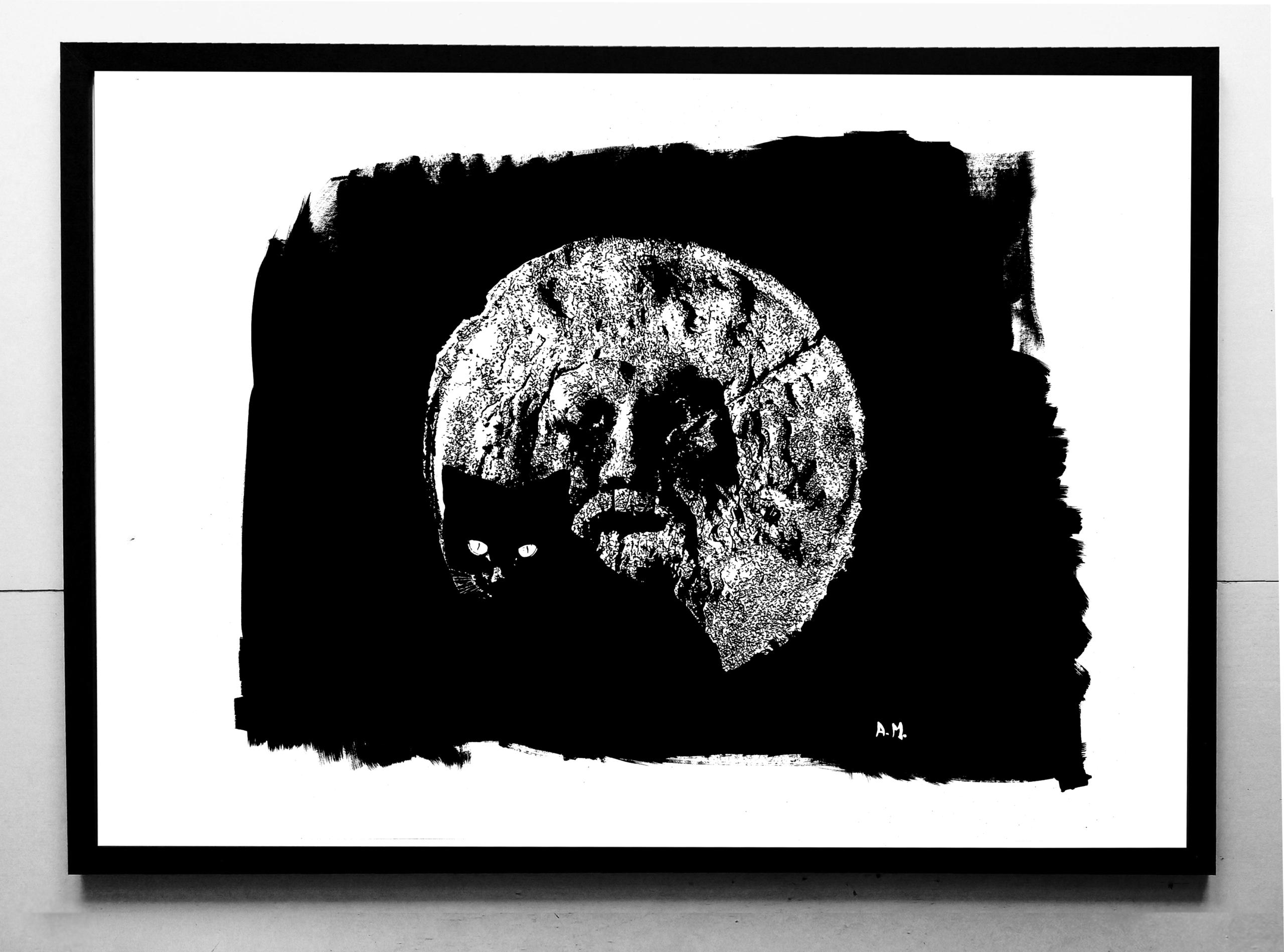“Superstition”, Alexandre Mitchell, 2023 (50 x 65 cm, Indian ink)
What is superstition if not an irrepressible animist belief frowned upon by a dominant religion? The Bocca della Verità (‘Mouth of Truth’), a round disk of marble weighing about 1,200 kg, has been lying against a wall of the Basilica di Santa Maria in Cosmedin in Rome since the beginning of the 17th century. This mask-like figure, probably sculpted in the 2nd century CE represents the god Oceanus. Given that it is pierced with 5 holes (eyes, nostrils and mouth) it was certainly not a fountainhead but rather a drain. In ancient Rome, sewer covers often represented water and river divinities, as if they drank the rain, guiding the water to the sea. In time, its meaning and function was forgotten and from the middle-ages onwards this drain became known as ‘The mouth of Truth’. In those (very) Christian days, people often imagined that ancient pagan sculptures were secretly alive through the agency of demons trapped in the stone and they often inspired a variety of cautionary tales. As Gregory Peck tells Audrey Hepburn hundreds of years later in Roman Holiday (1953), ‘the legend is that if you lie and put your hand in its mouth, it will be bitten off’. What was known as a test of fidelity between worried spouses in 1450 (although first mentioned in the Mirabilia Urbis Romae, a medieval travel guide for pilgrims in Rome, written around 1143) become a tourist trap in the modern age, with thousands of couples still lining up in front of the basilica to place their hands inside its mouth, whatever their faith.




